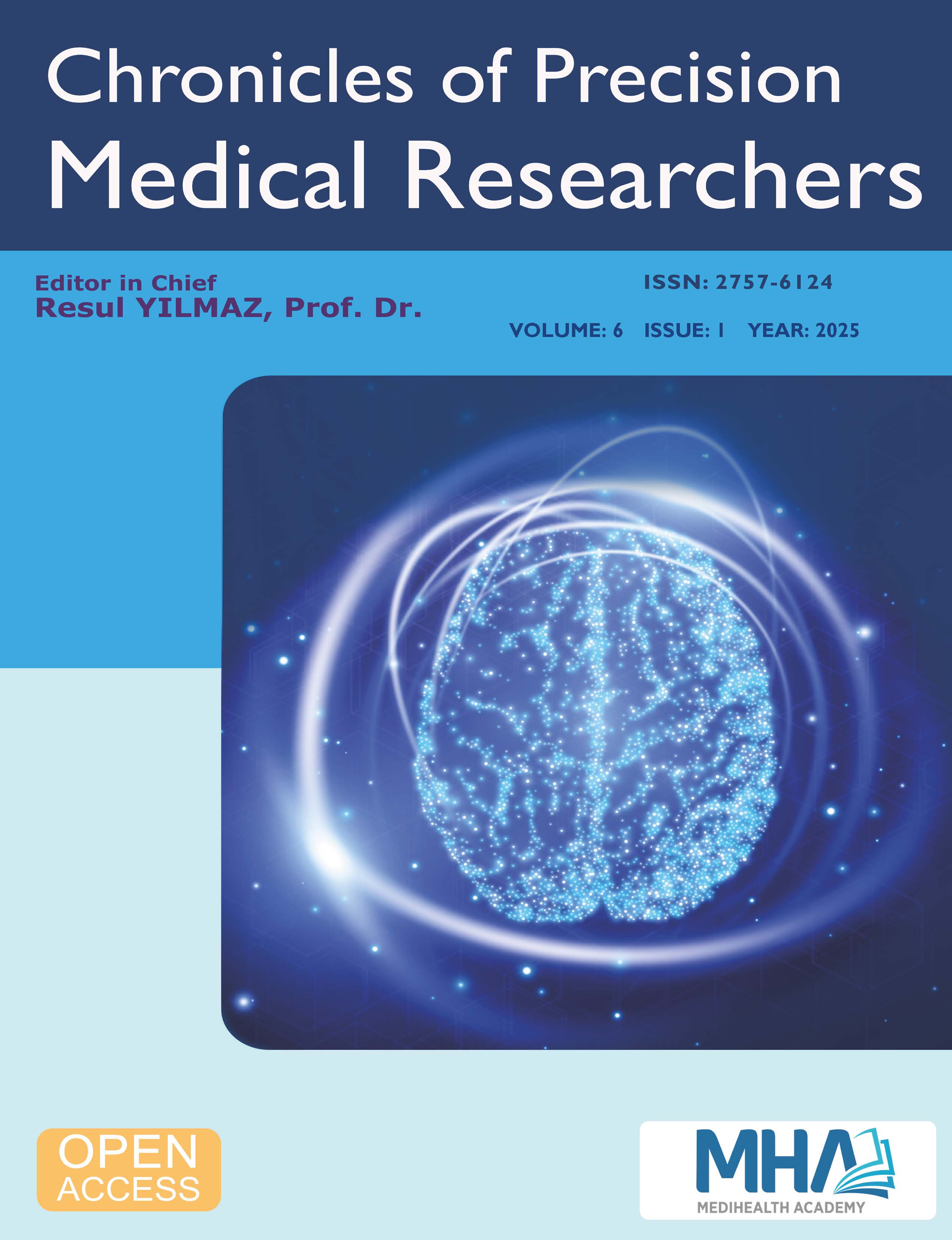Assessing the Quality and Reliability of YouTube Videos as a Source of Information for Chronic Neck Pain Exercises
Evaluation of Youtube Exercise Videos in Chronic Neck Pain
DOI:
https://doi.org/10.5281/zenodo.15081901Keywords:
Chronic neck pain, Exercise, YouTubeAbstract
Aim: This study aims to assess the quality and reliability of YouTube videos as an exercise source for chronic neck pain.
Material and Method: On April 8, 2024, YouTube was searched with the Turkish terms "neck pain exercises", "neck pain rehabilitation", and "neck pain physical therapy." The videos' upload dates, lengths, views, daily views, likes, daily likes, comments, and daily comments were recorded. Videos were also categorized based on the creators' knowledge and professions. Reliability was assessed using the modified DISCERN scale, and quality was evaluated using the Global Quality Scale (GQS). Videos were categorized as low, medium, or high quality according to their GQS scores.
Results: Of the 50 videos evaluated, 24% were high quality, 34% were medium quality, and 42% were low quality. Among videos prepared by physicians, 75% were of medium or high quality, compared to 69.7% for academics and 72% for non-physician healthcare personnel. No high-quality videos were uploaded by individual users or yoga/sports/pilates instructors. High-quality videos had significantly higher DISCERN scores, views, daily views, likes, daily likes, comments, and daily comments compared to lower-quality videos (p<0.05).
Conclusion: The quality of YouTube videos as an exercise source for chronic neck pain is insufficient. Patients and users should be directed to reliable sources, and healthcare professionals must take responsibility for creating high-quality content.
Downloads
References
Hogg-Johnson S, van der Velde G, Carroll LJ, Holm LW, Cassidy JD, Guzman J, et al. The burden and determinants of neck pain in the general population: results of the Bone and Joint Decade 2000–2010 Task Force on Neck Pain and Its Associated Disorders. Spine. 2008;33(4S):S39-S51.
Cohen SP, editor Epidemiology, diagnosis, and treatment of neck pain. Mayo Clinic Proceedings; 2015: Elsevier.
Kawai K, Kawai AT, Wollan P, Yawn BP. Adverse impacts of chronic pain on health-related quality of life, work productivity, depression and anxiety in a community-based study. Family practice. 2017;34(6):656-61.
Samir SM, Elshinnawy AM, Abd Elrazik RK, Battesha HHM, Gazya AA. The long-term effect of smartphone overuse on Cervical Posture and range of motion in asymptomatic sedentary adults. Journal of Advanced Pharmacy Education and Research. 2019;9(4-2019):89-95.
Nag PK, Nag PK. Musculoskeletal disorders: Office menace. Office Buildings: Health, Safety and Environment. 2019:105-26.
de Zoete RM, Brown L, Oliveira K, Penglaze L, Rex R, Sawtell B, et al. The effectiveness of general physical exercise for individuals with chronic neck pain: a systematic review of randomised controlled trials. European Journal of Physiotherapy. 2020;22(3):141-7.
O'Riordan C, Clifford A, Van De Ven P, Nelson J. Chronic neck pain and exercise interventions: frequency, intensity, time, and type principle. Archives of physical medicine and rehabilitation. 2014;95(4):770-83.
Fox S, Duggan M. Health online 2013. Health. 2013;2013:1-55.
Szmuda T, Syed MT, Singh A, Ali S, Özdemir C, Słoniewski P. YouTube as a source of patient information for coronavirus disease (Covid‐19): a content‐quality and audience engagement analysis. Reviews in Medical Virology. 2020;30(5):e2132.
Li HO-Y, Bailey A, Huynh D, Chan J. YouTube as a source of information on COVID-19: a pandemic of misinformation? BMJ global health. 2020;5(5):e002604.
Singh AG, Singh S, Singh PP. YouTube for information on rheumatoid arthritis—a wakeup call? The Journal of rheumatology. 2012;39(5):899-903.
Bernard A, Langille M, Hughes S, Rose C, Leddin D, Van Zanten SV. A systematic review of patient inflammatory bowel disease information resources on the World Wide Web. Official journal of the American College of Gastroenterology| ACG. 2007;102(9):2070-7.
Ertem U, Özçakır S, İrdesel FJ, Günay SM. YouTube as a source of information on piriformis syndrome exercises. Turkish Journal of Physical Medicine and Rehabilitation. 2023;69(1):15.
Bağcıer F, Yorulmaz E, Temel MH. YouTube as a source of patient information for knee osteoarthritis exercises. 2021.
Hush JM, Michaleff Z, Maher CG, Refshauge K. Individual, physical and psychological risk factors for neck pain in Australian office workers: a 1-year longitudinal study. European spine journal. 2009;18:1532-40.
de Campos TF, Maher CG, Steffens D, Fuller JT, Hancock MJ. Exercise programs may be effective in preventing a new episode of neck pain: a systematic review and meta-analysis. Journal of physiotherapy. 2018;64(3):159-65.
Wang H, Yan C, Wu T, Zhang X, He J, Liu Z, et al. YouTube online videos as a source for patient education of cervical spondylosis—a reliability and quality analysis. BMC Public Health. 2023;23(1):1831.
Education First E. EF EPI English proficiency index. Recovered from https://www.ef. com/wwen/epi/regions/europe/turkey.2023.
Smith J, Lewis J, Prichard D. Physiotherapy exercise programmes: are instructional exercise sheets effective? Physiotherapy theory and practice. 2005;21(2):93-102.
Emmerson KB, Harding KE, Taylor NF. Providing exercise instructions using multimedia may improve adherence but not patient outcomes: a systematic review and meta-analysis. Clinical Rehabilitation. 2019;33(4):607-18.
Zhang X, Yang Y, Shen Y-W, Zhang K-R, Ma L-T, Ding C, et al. Quality of online video resources concerning patient education for neck pain: A YouTube-based quality-control study. Frontiers in Public Health. 2022;10:972348.
Güloğlu S, Özdemir Y, Basim P, Tolu S. YouTube English videos as a source of information on arm and shoulder exercise after breast cancer surgery. European Journal of Cancer Care. 2022;31(6):e13685.
Zure M, Korkmaz MD, Menekşeoğlu AK. Exercises for fibromyalgia syndrome: what YouTube tells us as a source of information for patient and physician education. Clinical Rheumatology. 2024;43(1):473-80.
Kocyigit BF, Nacitarhan V, Koca TT, Berk E. YouTube as a source of patient information for ankylosing spondylitis exercises. Clinical rheumatology. 2019;38:1747-51.
Downloads
Published
How to Cite
Issue
Section
License
Copyright (c) 2025 Chronicles of Precision Medical Researchers

This work is licensed under a Creative Commons Attribution-NonCommercial-ShareAlike 4.0 International License.






